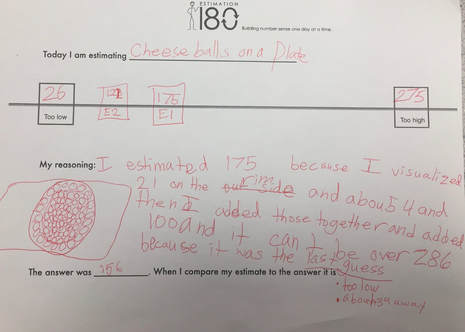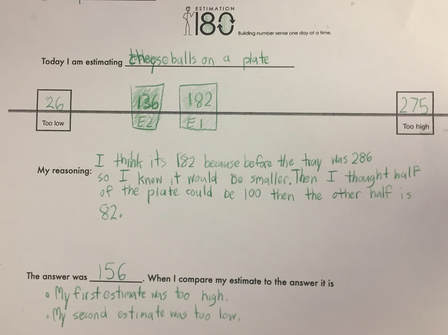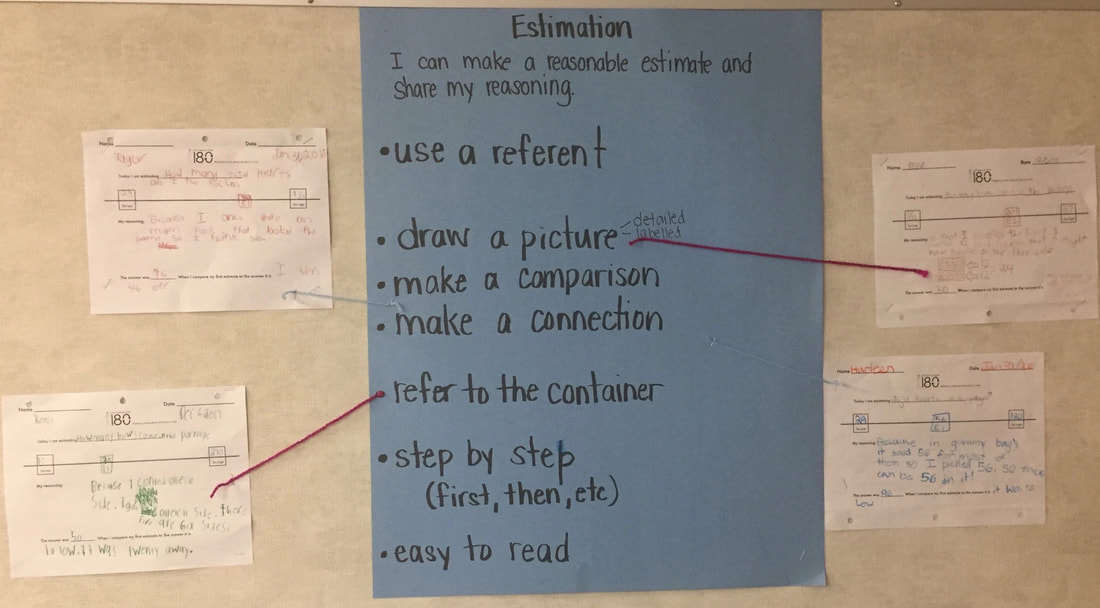What is Estimation 180?
Estimation 180 is an activity curated by Andrew Stadel, a teacher and Mathematics Coach in California. He created 180 different estimation challenges for his students and published his site, Estimation 180 in 2012. Since then teachers around the world have been using his lessons to develop students' number sense and reasoning.
What is the learning?
This routine engages students in number concepts, including relative size, comparing and ordering numbers, and benchmarks. Some students will use mental math when determining quantities. Similarly, some student may apply spatial reasoning when estimating.
Some potential learning intentions for curricular competencies include:
Some potential learning intentions for curricular competencies include:
- Reasoning and Analyzing - use reasoning to determine the estimate.
- Understanding and Solving - engaging in estimating using multiple strategies
- Communicating and Representing - explain and justify estimates and represent understanding on recording template using words and/or pictures
- Connecting and Reflecting - connecting different mathematical ideas and reflect on reasoning
How do I facilitate Estimation 180 with my students?
I begin by showing the students an image of a quantity. Together, as a class we determine what would be a "too high" estimate and what would be a "too low" estimate. If, we are using a recording template, I would have the students record these benchmarks. Next, I would have the students take some quiet thinking time to think about their best estimate "E1" (their first estimate) and how they came to this number. It is always good to have student turn and talk to a neighbour about their reasoning. Again, if you are having your students record their thoughts, they could write down how their reasoning. I encourage my students to not only use words, but also pictures with labels. Then I show the reveal video and sometimes before it reaches the end I pause the video and ask the students if they wish to revise their first estimate based on the new information they have. As you can see in the picture below, the students record this as "E2" Estimate Two. I think it is important to show students that mathematicians revise their thinking as they get more information.
Supporting websites/videos/blogposts:
http://www.estimation180.com/about.htmlwww.estimation180.com/about.html



